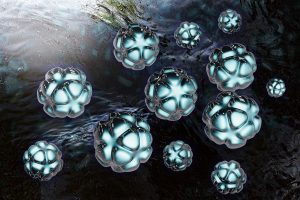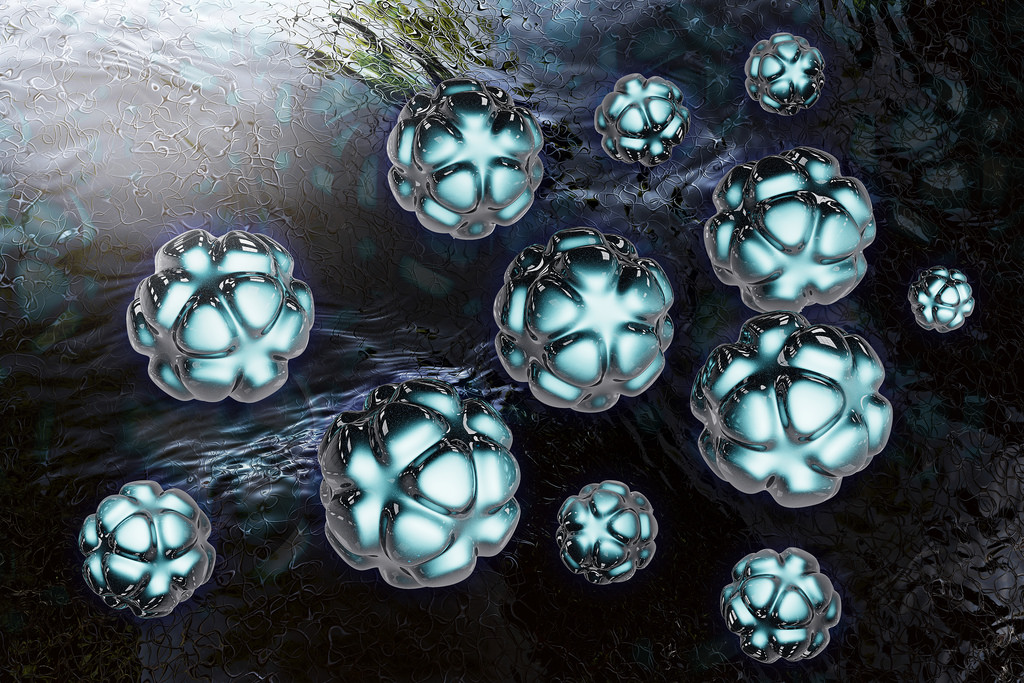A few years ago, the concept of nanoscience would have seemed so fictional that Steven Spielberg would have done an outstanding job curating it into a movie. Today, nanotechnology is making its way into clinical practice and soon may be the standard of care for a variety of diseases. Neurodegenerative diseases (NDD) are characterized as loss of neurons in the brain leading to cognitive decline, memory loss, motor ability, etc. Inflammation has also been indicated as an additional driver of the pathogenesis of NDD and is therefore also considered when developing therapies. In an effort to minimize the loss of nervous tissue, targeted delivery of growth factor aims to support and expand resident central nervous system stem cells for endogenous repair. By design, nanoparticles can be formulated to cross the blood-brain barrier, enabling continuous delivery of neuroprotective agents and anti-inflammatories for sufficient duration to reset the neuro-immune homeostasis [1].

Courtesy of Argonne National Laboratory through Creative Commons Attribution 2.0
Autoimmune diseases are characterized an immune response against self-tissues. Systemic lupus erythematosus (SLE) is an example of an autoimmune disease where anti-nuclear and anti-DNA antibodies are created by “rogue” T-lymphocyte activation of antibody-producing B-lymphocytes. These antibodies are nonspecific and capable of forming immune complexes in small blood vessels in organs, such as the kidney, resulting in damage. The standard treatment for SLE, like most other autoimmune diseases, is immunosuppression with agents such as mycophenolate, azathioprine, and glucocorticoid steroids. These approaches are not as specific and thus present with a lot of side effects and toxicity. Nanoparticles could selectively deliver immunosuppressant to autoreactive immune cells and modulate hyperactive immune systems [2]. An example of this is the coupling of CD4 antibody (clone RM4-4) to mycophenolate-loaded nanogels, which has shown inhibition of autoreactive lymphocytic cell proliferation in mouse models [3].
Further capitalizing on the knowledge of the immune system through study of autoimmune diseases, researchers have found a way to conjugate nanoparticles with fragments of a lupus anti-DNA autoantibody. The conjugated nanoparticles are loaded with chemotoxic agents such as doxorubicin and were shown to bind to DNA preferentially localized with tumors in vivo. This work demonstrates an autocatalytic drug delivery mechanism and establishes proof of concept for a new anti-DNA autoantibody-based approach for enhancing delivery of nanoparticles to tumors [4]. Application of nanoparticles may increase solubility of poorly water-soluble drugs and can subsequently facilitate drug delivery, prevent drug resistance, provide site-directed drug delivery, enhance effective transcytosis of drugs through epithelial cells and endothelial barriers, deliver two or more drugs, and make it possible to trace the region of drug delivery.
The future of medicine is here, literally on our campus, where nanotechnology is being utilized to develop a microfluidic model of the human gastrointestinal system, complete with endogenous microbiota. The HuMiX system (human-microbiome crosstalk) is capable of simulating transcriptional, metabolic, and immunological responses in human intestinal epithelial cells, a concept that can allow for study of events that occur in the gut such as drug metabolism, antibiotic effects on gut flora, and transcriptomes of colorectal cancers.
- Metcalfe SM, Bickerton S, Fahmy T. Neurodegenerative Disease: A Perspective on Cell-Based Therapy In The New Era of Cell-Free Nano-Therapy. Curr Pharm Des. 2016; 22(46):epub, ahead of print.
- Rostamzadeh D, Razavi SR, Esmaeili S, et al. Application of nanoparticle technology in the treatment of Systemic lupus erythematosus, Biomedicine & Pharmacotherapy, Volume 83, October 2016, Pages 1154-1163. doi: 10.1016/j.biopha.2016.08.020.
- Look M, Stern E, Wang QA, et al. Nanogel-based delivery of mycophenolic acid ameliorates systemic lupus erythematosus in mice. Published April 1, 2013. J Clin Invest. 2013;123(4):1741-1749. doi:10.1172/JCI65907.
- Chen, Z., Patel, J., Noble, P., et al. A lupus anti-DNA autoantibody mediates autocatalytic, targeted delivery of nanoparticles to tumors. Oncotarget. 2016; 7(37), 59965-59975.
- Shah P, Fritz JV, Glaab E, Zenhausern F, et al. A microfluidics-based in vitro model of the gastrointestinal human–microbe interface. Nature Communications. 2016;7:11535. doi:10.1038/ncomms11535.
Ogaga Ojameruaye is a medical student at The University of Arizona College of Medicine – Phoenix. He completed his BS in physiology at The University of Arizona and completed his MS in psychology at Grand Canyon University. Ogaga is passionate about translational medicine, bench-to-bedside research, and the discovery of new diagnostic tools as they contribute to the model of precision medicine.


